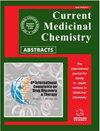唑类同型二聚体作为有前景的抗真菌药物:合成、生物活性评价和分子模拟。
IF 3.5
4区 医学
Q2 BIOCHEMISTRY & MOLECULAR BIOLOGY
引用次数: 0
摘要
简介:以2-(2,4-二氟苯基)-2,3-环氧-1- (1h -1,2,4-三唑-1-基)丙烷为原料,与多种二胺直接反应,一步合成了一系列具有抗真菌活性的三唑类化合物。方法:对所得化合物进行抑菌活性分析。分子模型用于预测结合模式。结果:该先导物对白色念珠菌的抑制作用是氟康唑的4倍,且活性谱更宽,可抑制黑曲霉的生长。结论:本研究结果可为开发新型抗真菌药物提供参考。本文章由计算机程序翻译,如有差异,请以英文原文为准。
Azole Homodimers as Promising Antifungal Agents: Synthesis, Biological Activity Evaluation and Molecular Modeling.
Introduction: A new series of triazoles with antifungal activity have been synthesized in a one-step fashion by direct reaction of 2-(2,4-difluorophenyl)-2,3-epoxy-1-(1H-1,2,4-triazol-1-yl)propane with various diamines.
Method: Obtained compounds were profiled for biological activity against pathogenic strains of fungi C. albicans and A. niger. Molecular modeling was used to predict binding modes.
Result: The lead compound was 4 times more active against C. albicans than fluconazole and demonstrated a wider spectrum of activity, inhibiting the growth of A. niger.
Conclusion: The results presented herein can contribute to the development of novel antifungal therapeutic agents.
求助全文
通过发布文献求助,成功后即可免费获取论文全文。
去求助
来源期刊

Current medicinal chemistry
医学-生化与分子生物学
CiteScore
8.60
自引率
2.40%
发文量
468
审稿时长
3 months
期刊介绍:
Aims & Scope
Current Medicinal Chemistry covers all the latest and outstanding developments in medicinal chemistry and rational drug design. Each issue contains a series of timely in-depth reviews and guest edited thematic issues written by leaders in the field covering a range of the current topics in medicinal chemistry. The journal also publishes reviews on recent patents. Current Medicinal Chemistry is an essential journal for every medicinal chemist who wishes to be kept informed and up-to-date with the latest and most important developments.
 求助内容:
求助内容: 应助结果提醒方式:
应助结果提醒方式:


